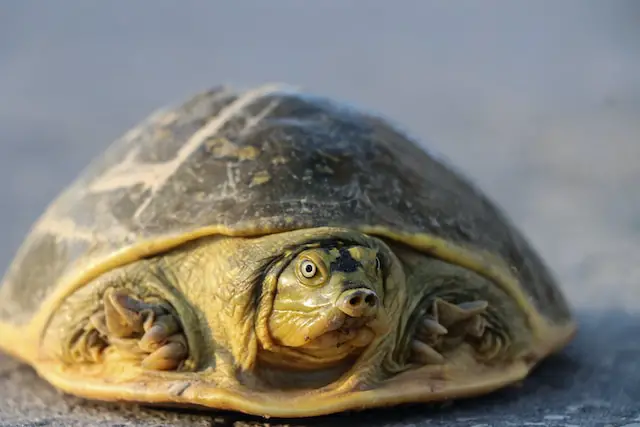The answer is yes, Galapagos tortoises can swim. In fact, they are quite skilled swimmers and have been known to swim long distances between islands. However, they are not built for swimming and prefer to stay on land whenever possible.
Despite this, they can still navigate the waters around the Galapagos Islands when necessary.
Swimming Abilities of Galapagos Tortoise
Buoyancy
Galapagos tortoises are known for their large size and heavy weight. However, they are still able to swim due to their buoyancy.
Their shells are filled with air pockets, which helps them float on the water’s surface. This buoyancy allows them to move their limbs freely and swim in shallow water.
Breathing
While swimming, Galapagos tortoises need to come up for air periodically. They can hold their breath for several minutes but cannot stay underwater for extended periods.
When they come up for air, they take a deep breath and quickly submerge themselves again.
Galapagos tortoises are not fast swimmers and are not known for their swimming abilities. They are primarily land animals and spend most of their time on land.
However, they can swim short distances in shallow water to reach nearby islands or escape predators.
In conclusion, while Galapagos tortoises are not known for their swimming abilities, they can swim short distances in shallow water due to their buoyancy and ability to breathe.
Factors Affecting Galapagos Tortoise Swimming
Water Temperature
Galapagos tortoises are cold-blooded reptiles whose body temperature depends on the environment. Therefore, water temperature plays a crucial role in their swimming ability.
If the water is too cold, their muscles may become stiff and struggle to move their limbs effectively, making swimming difficult.
On the other hand, if the water is too warm, they may become overheated and exhausted, which can also affect their swimming ability.
Body Size
Galapagos tortoises are the largest tortoises in the world, with some individuals weighing over 500 pounds. Their large size can make it challenging for them to swim efficiently, especially if they are in deep water.
The larger the tortoise, the more energy it takes to move through the water and the more buoyancy it needs to stay afloat. Therefore, smaller tortoises may be better swimmers than larger ones.
Water Depth
Water depth can also affect a Galapagos tortoise’s swimming ability. If the water is too shallow, the tortoise may not be able to submerge fully, making it difficult to move through the water.
However, if the water is too deep, the tortoise may struggle to reach the bottom or become disoriented, which can be dangerous. The ideal water depth for Galapagos tortoises to swim in is between 1-3 meters.
In conclusion, several factors can affect a Galapagos tortoise’s swimming ability, including water temperature, body size, and water depth. It is essential to consider these factors when studying or observing these fascinating creatures in their natural habitat.
Galapagos Tortoise Anatomy
Shell
The Galapagos tortoise is known for its large, dome-shaped shell that protects it from predators. The shell comprises the carapace (upper shell) and the plastron (lower shell).
The carapace comprises bony plates covered by a keratin layer, the same material found in human nails and hair. The plastron is also made up of bony plates, but a layer of skin covers it.
The Galapagos tortoise’s shell is used for protection and plays a role in regulating body temperature. The tortoise can retract its head, legs, and tail inside the shell to conserve heat or extend it to release heat.
Limbs
The Galapagos tortoise has four short, sturdy legs adapted for walking on land. The front legs are slightly shorter and have flattened claws for digging and scraping vegetation. The hind legs are longer and have rounded claws used for traction on rough terrain.
Although the Galapagos tortoise is not known for its swimming abilities, it has been observed wading in shallow water and crossing small streams.
Its limbs are not well-suited for swimming but are strong enough to support the tortoise’s weight in water.
In conclusion, the anatomy of the Galapagos tortoise is well-adapted for life on land, with its sizeable protective shell and sturdy legs. While it may not be a strong swimmer, it can wade in shallow water and cross small streams.




